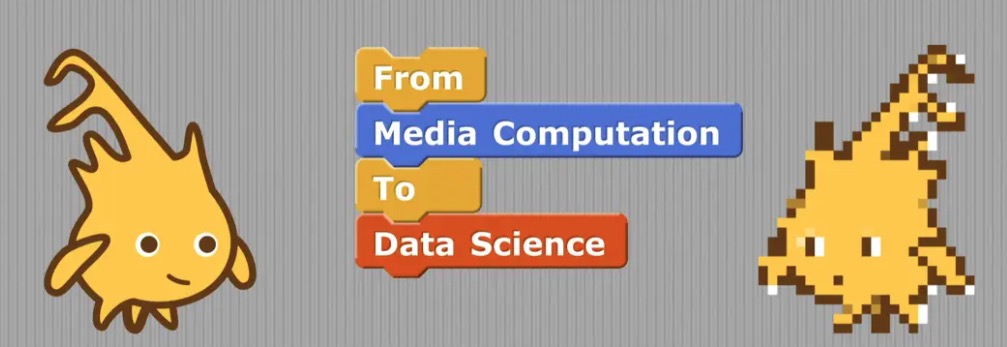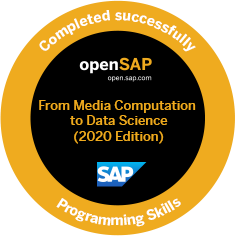Hinweis: Eine deutsche Fassung dieses Berichts findet sich auf meinem konzeptblog. Over the years I have participated in several MOOCs and webinars. Most of the time, I did not take advantage of all the offers within the events. As I was usually only interested in selected content, I did not obtain a certificate at any of the courses. This time it was different. At the course From Media Computation to Data Science I have now acquired a certificate for the first time, here an openSAP certificate On the one hand, I finished the course completely, because programming with Snap! has accompanied me for several years in my work on the recoding & remixing of Digital Art. On the other hand I always had the feeling that I was only scratching the surface of the „true“ possibilities of Snap! So the course offered the chance to expand this basic knowledge with advanced concepts.
Over the years I have participated in several MOOCs and webinars. Most of the time, I did not take advantage of all the offers within the events. As I was usually only interested in selected content, I did not obtain a certificate at any of the courses. This time it was different. At the course From Media Computation to Data Science I have now acquired a certificate for the first time, here an openSAP certificate On the one hand, I finished the course completely, because programming with Snap! has accompanied me for several years in my work on the recoding & remixing of Digital Art. On the other hand I always had the feeling that I was only scratching the surface of the „true“ possibilities of Snap! So the course offered the chance to expand this basic knowledge with advanced concepts.
I was not disappointed. Using illustrative examples with the processing of (multimedia) data, Jadga Huegle and Jens Moenig introduced advanced CS concepts, especially the Lambda Calculus with higher order functions. I am a fan of programs that are as short and variable as possible. With the newly acquired knowledge I can probably formulate the majority of my previous projects even more elegantly and variably.
 As I had successfully passed the weekly self-tests, I also took the final test at the end and can now present my first certificate acquired online.
As I had successfully passed the weekly self-tests, I also took the final test at the end and can now present my first certificate acquired online.
However, the tests provoked my only criticism of the course. I am not a fan of multiple choice tests. As a former distance learning didactician, I know the difficulty of producing good tests and of course the course providers also had to struggle with these difficulties. I found some questions and several alternative answers rather contrived and sometimes without any compelling reference to what was learned. The implementation of concrete programming tasks (such as in the BJC course) would have been more stimulating. But that was probably not possible on the platform and would have meant additional work for the providers.
Not a shortcoming of the course, but rather of the manual for Snap! are the missing or too short help informations on functions, provided in the libraries. There I would need much more explanations and concrete examples to make use of the hidden power of Snap! The further development of Snap! is probably often faster than the documentation.
Nevertheless an absolutely exciting and stimulating course, which I can only warmly recommend! Thanks to Jadga and Jens, combined with the hope for a continuation!

Pingback: mein 1. Badge in einem MOOC … | konzeptblog
Pingback: My SnapCon2021 … | Programmieren für Alle